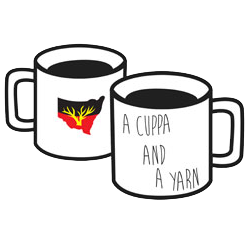
1 March, 2010
We Have No Business Supporting Corruption
Statement by Roy Ah See, Councillor for the Sydney / Newcastle region
February 25, 2010.
In the past few weeks, there's been substantial media interest in the future of the Koompahtoo Local Aboriginal Land Council (KLALC).
The Newcastle Herald in particular has followed this issue closely, and I commend the paper for taking such an active interest. It's a matter of enormous importance to my constituents, and to future generations of Aboriginal people.
On February 9, Minister for Aboriginal Affairs, Paul Lynch announced that he was considering the dissolution of the Koompahtoo Local Aboriginal Land Council. That decision is expected by March 8.
It follows the sacking of Koompahtoo by the Minister in 2003, and the appointment of an administrator, a process which has cost the NSW Aboriginal Land Council more than $1.5 million. It also follows a lengthy and much publicised series of court cases, sparked by a damning Independent Commission Against Corruption report which exposed the truth of the illegal activities of a few people, black and white, in their dealings with land owned by the Koompahtoo LALC.
Some of those people have been dealt with, others are still awaiting their day in court. Obviously, it would be inappropriate to comment on them in any detail.
So rather than focus on the minority, I think we should instead focus on the future of land rights in my region, and about a way forward for the majority of Koompahtoo members who worked hard to save a ship that was holed by the activities of a few.
And that's my first point: I think as Aboriginal people we need to consider why a few bad apples were able to spoil Koompahtoo for the whole bunch.
I think part of the answer lies in the white response to black corruption. Aboriginal people would have to be the most audited, most watched, most accounted people on earth. The consequences for our failures are often much greater than those for others sections of the community.
But I also think another part of the answer lies with us, and the fact that the great strength of Aboriginal people - our determination to protect our own - can also occasionally be our great weakness. Sometimes, we can be too forgiving. We need to step up and deal with the undesirable elements and aspects of our community. We owe this to our children, we owe this to ourselves.
We must also recognise that the failure of white leaders to live up to the standards they impose on black organisations does not excuse our black leadership from its responsibilities to black people.
When I was elected to the NSW Aboriginal Land Council in 2007, my campaign platform was 'New leadership, new vision - respecting our past, securing our future'.
I spoke about integrity, about accountability, about transparency and about bringing responsibility back to the members. I meant every word, and Koompahtoo brings that all into sharp focus not just for me, but for
Aboriginal people across the state.
It provides us all an opportunity to show new leadership, to show new vision. It's a chance to prove that we're not going to accept corruption, that we're not going to accept bad behaviour or maladministration.
The decision to dissolve the Koompahtoo Local Aboriginal Land Council (KLALC) ultimately rests with the Minister for Aboriginal Affairs. If it occurs, I will not like it, but I will not oppose it. KLALC has made its choices over many years, and KLALC must now face the consequences of those choices. That's not a white concept of governance, it's an ethic that has been part of the fabric of Aboriginal society since time began.
However, if the Minister does move against Koompahtoo, I will not support its permanent demise. While I will never be in the business of supporting corruption, nor do I believe in throwing the baby out with the bathwater.
At a local government level, if the Newcastle City Council were engaged in corrupt practices, I would support its sacking and a period of administration, but I would never support its wholesale abolition. You don't tackle corruption by dispensing with democracy. You tackle corruption by meeting the wrong doers head-on, and then starting again.
In the case of Koompahtoo, if it is dissolved I would support moves to reconstitute the council. We can rebuild Koompahtoo, we can shut out the wrong doers and we stamp out the corruption. This is a message we all should support.
It will not be easy, but the life of an Aboriginal person was apparently never meant to be either. I am, first and foremost, a proud Aboriginal man from a poor Aboriginal community. I am an Aboriginal father, a brother, a son, an uncle. I grew up on a mission reserve, so I know what it's like to face racism and adversity every day.
I know what it's like to struggle. I also know what it's like to come out the other end, stronger and prouder than when you started.
I can tell you, you don't get there by supporting corruption, by turning your back on the problems you face, or by blaming others when your own actions bear greater scrutiny.
My love of my culture, my people, and above all else my love of my children is what spurred me on to seek election to the NSW Aboriginal Land Council. It's still what drives me today to work my black arse off to make the land rights system in NSW the very best it can be.
Land rights is about securing a cultural and economic future for our children, and for future generations of Aboriginal children. I can't think of a more important job, or a more important reason for us all to work together.
I would urge people to make their submissions to the Minister before March 8.
---------------------------------------------------------------------------------------------
Further information: Peter Windsor: 0400 554603 or Roy Tatten 0417 555292

